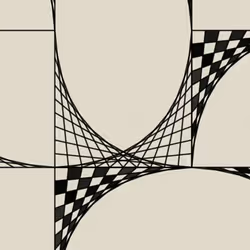My genesis art piece, fully on-chain.
Dedicated to generations that I have lost since I first drew these shapes, and my next generation that is yet to come.
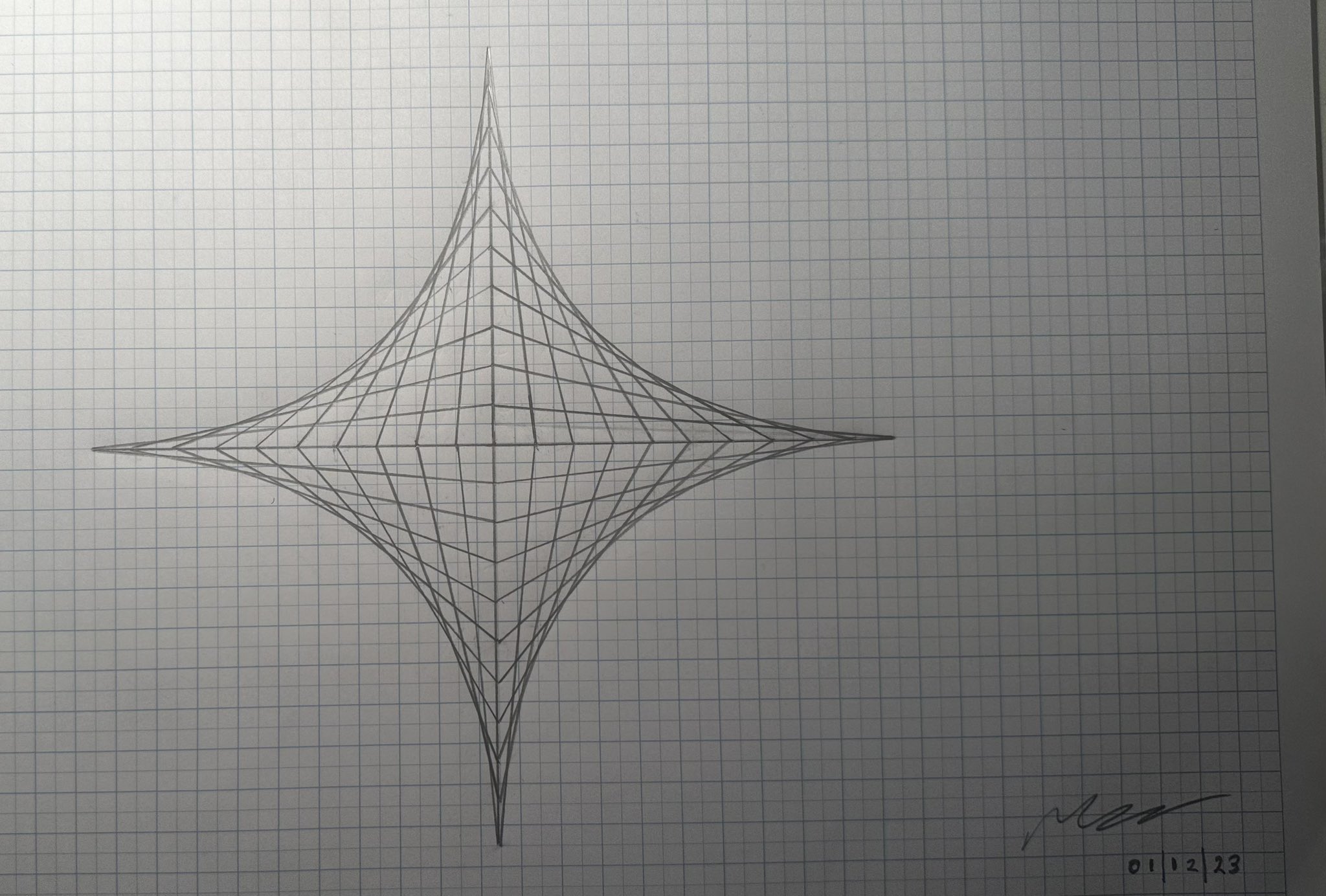
At around 7 yrs old, I became infatuated with creating these 'parabolic curves'.
Just straight lines, measured out with a pencil & ruler.
Producing a form that looks three dimensional.
I guess these were my first “digital” artworks.
Recently, after my computer decided to die suddenly, I went back to my childhood and started to recreate them...
This was the first one I've made in over 30 years.
After reading about the Musikalisches Würfelspiel (“musical dice game”) used by composers in the classical era, I adapted that concept to try create an IRL generative artwork.
Subsitituing the dice for a coin, I let coin flips decide on where the artwork should go, whether the curves should be filled or not, and other aspects of the final artwork such as the border.
Once the page was filled, the NFT artwork that you see is the end result.
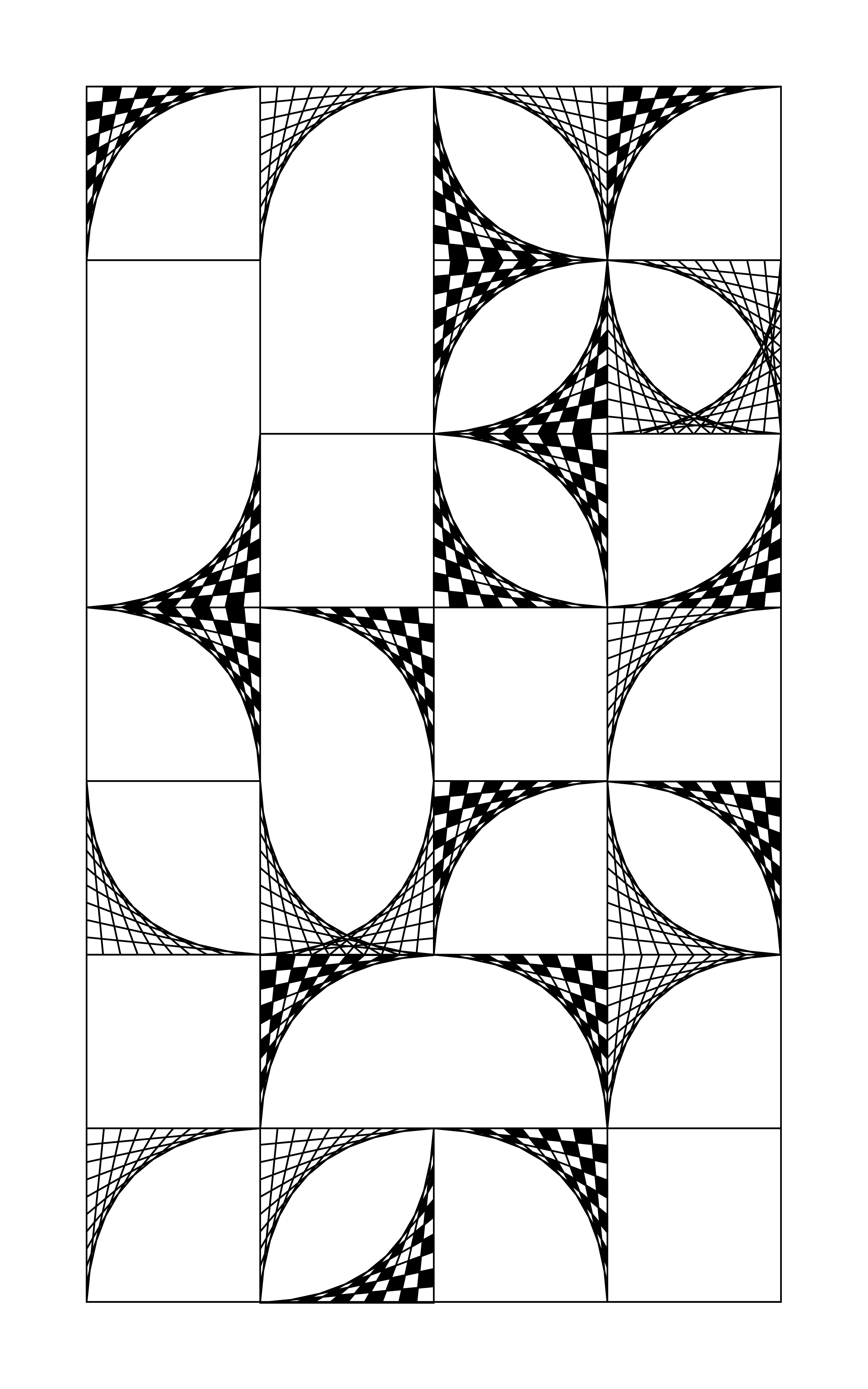
I started out by replicating the physical artwork in Illustrator, which outputted a .svg
I started out by replicating the physical artwork in Illustrator, which outputted a .svg
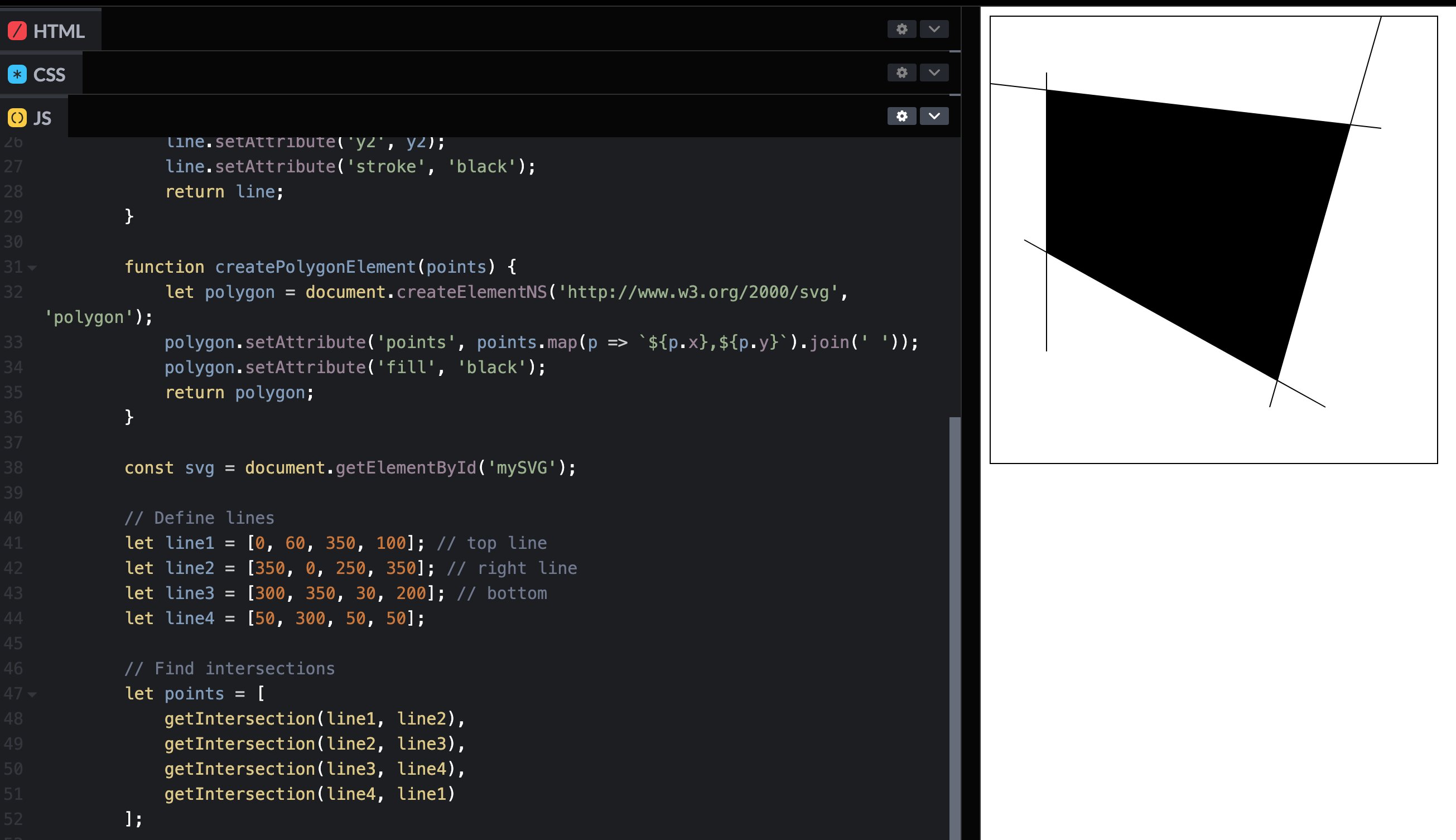
Drawing the lines with an algorithm was simple enough - finding the intersection of these lines and drawing a polygon a bit harder though
Drawing the lines with an algorithm was simple enough - finding the intersection of these lines and drawing a polygon a bit harder though
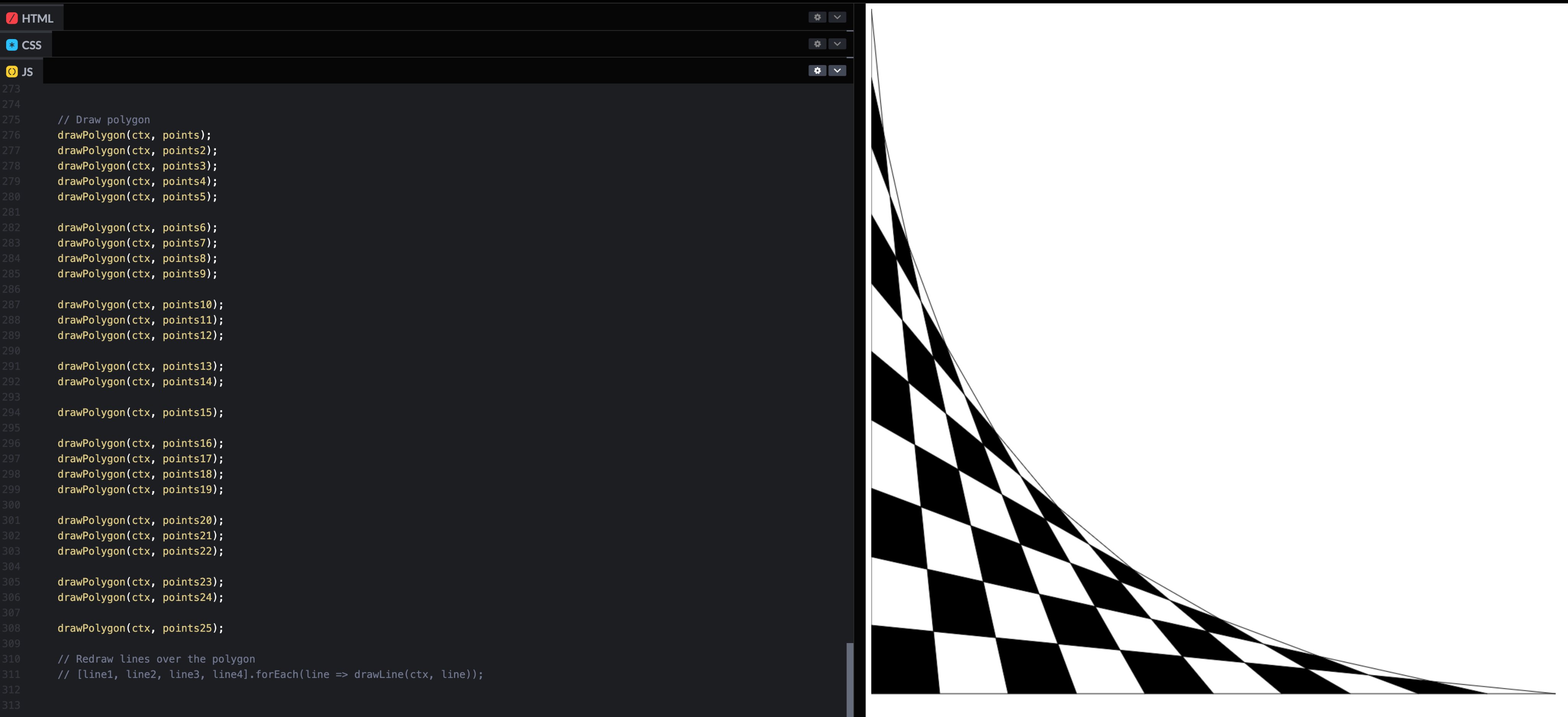
I now had a javascript algorithm that could create a parabolic curve, and with a tweak to the code, javascript could output a .svg file - a vector format that is fully on-chain friendly as it's just text
I now had a javascript algorithm that could create a parabolic curve, and with a tweak to the code, javascript could output a .svg file - a vector format that is fully on-chain friendly as it's just text

Those curves could then be moved (translated) within the svg to form shapes and I could start replicating the physical artwork with javascript
Those curves could then be moved (translated) within the svg to form shapes and I could start replicating the physical artwork with javascript
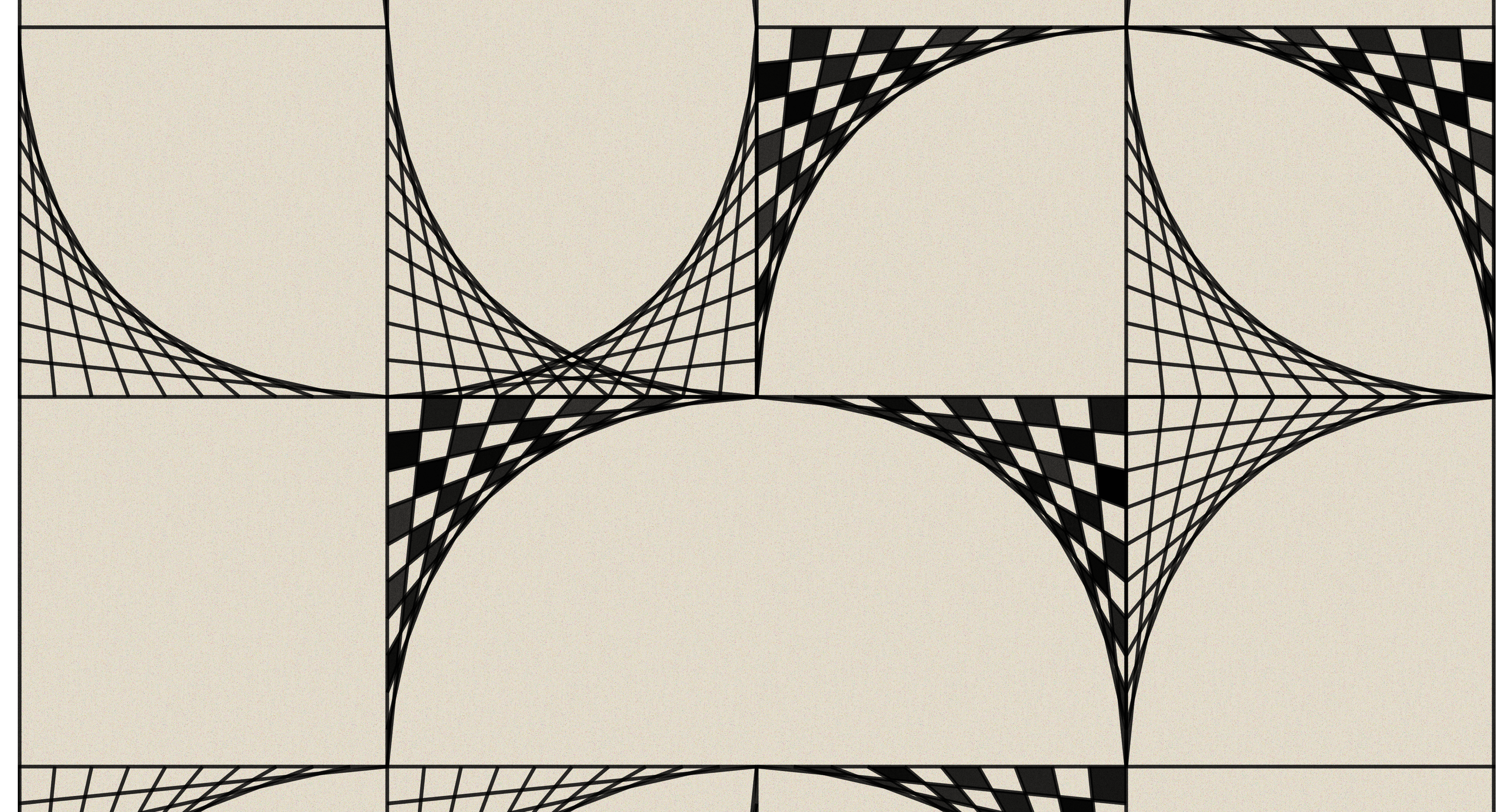

Once I had the design replicated, I wanted to bring the artwork to life with animation - evolving my past work with my present day learnings.
Using a seedable random number generator in javascript, each element of the artwork is animated at different intervals.
While I coded the animation algorithm and provided a seed phrase, the final output was decided by the computer...
Completing the physical generative to digital generative process.
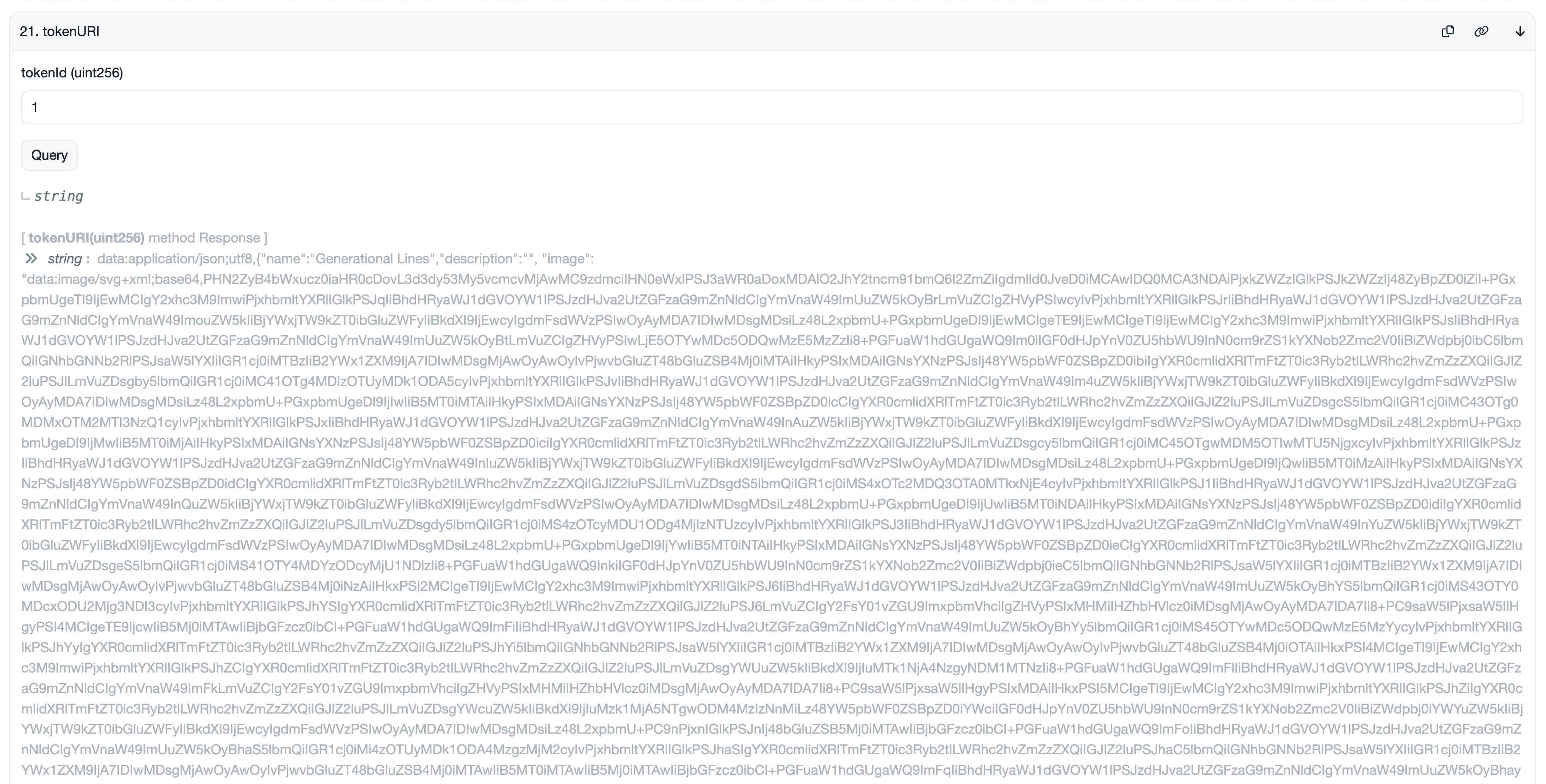
Using a SVG optimiser, I was able to get the generated file down to 61kb
And I was aware of the excellent Manifold Extension by diid that friends had used to put SVGs fully on-chain.
However, 61kb would normally be cost prohibitive to deploy.
Fortunately, I was able to use his yet-to-be-released latest version which supports SVGZ compression, reducing the cost significantly.
You can confirm it is fully on-chain via the contract tokenURI method - not 'just a URL to a JPEG' Elon.
A massive thank you to those in the space that have inspired me to finally release a piece of 'art'.
And to all the fully on-chain maxi's out there that teach, build & share knowledge.
Keep creating, marka.
Note: Most marketplace interfaces stop you from clicking on an image unfortunately. So to view the click-to-play animation, use the 'view original media' link on the item page here.
